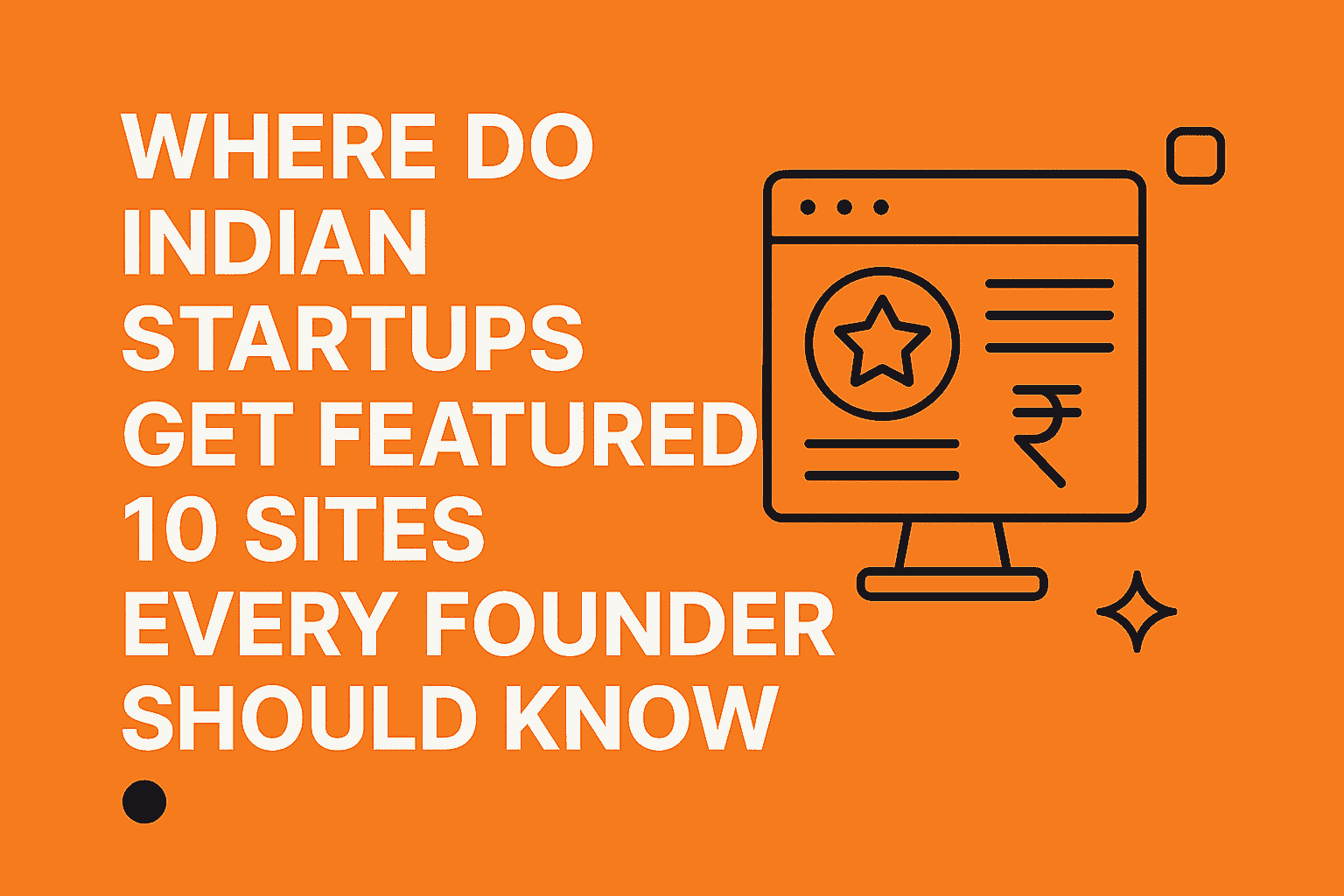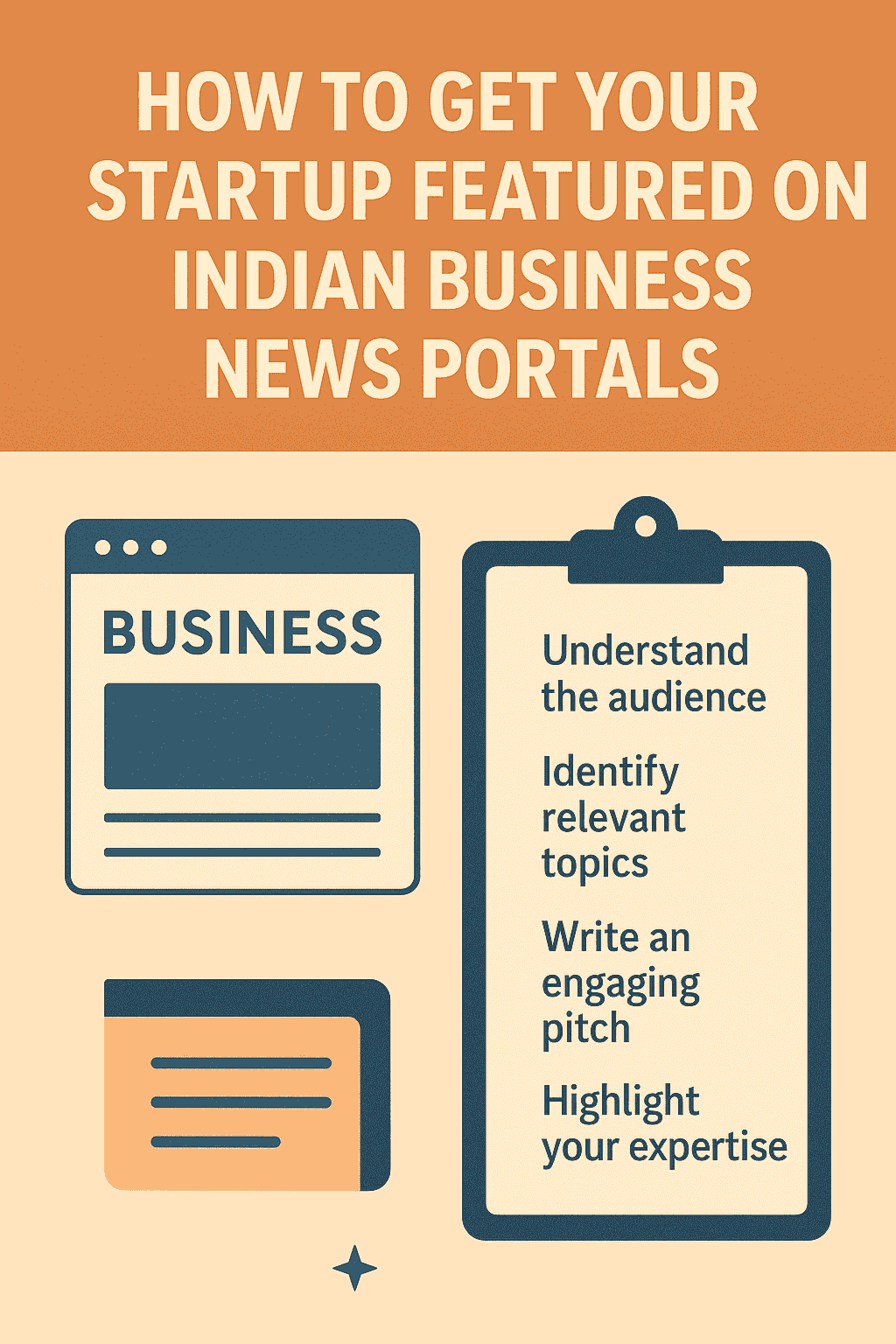India’s startup ecosystem is evolving at a breakneck pace. From emerging unicorns to small-town innovations, entrepreneurship is thriving across sectors and geographies. However, building a great product or service is no longer enough—today, visibility is currency. Gaining public recognition, building trust, and establishing brand authority is crucial for any startup looking to scale.
Top PR and Media Platforms Helping Indian Entrepreneurs Gain Visibility in 2025
For Indian founders, media exposure can amplify credibility and attract everything from customers to investors. Yet many early-stage entrepreneurs can’t afford large public relations retainers or dedicated communications teams. The solution? A new wave of founder-friendly media platforms that accept direct story submissions.
This article explores the top PR and startup media platforms in India that are helping entrepreneurs gain visibility—without needing agencies or intermediaries. It also breaks down how founders can craft compelling submissions and engage editorial teams with confidence.
Why Media Visibility Matters for Indian Startups
Media coverage isn’t just about vanity metrics or social media likes—it’s about storytelling. A compelling founder story or startup insight builds trust with customers, signals maturity to investors, and attracts talent. In today’s digital-first world, it also serves as a living credential that speaks to your values, vision, and resilience.
Whether you’re in your first six months or five years in, being featured in a trusted outlet makes a difference. And increasingly, these stories are no longer gatekept by PR firms. Founders are taking control, pitching themselves, and building their own media presence.
The New Media Landscape for Entrepreneurs
Several digital platforms in India now focus entirely on startup stories. These are not traditional newspapers or general business sites. They are startup-centric, digitally native publications that prioritize entrepreneurial journeys, sector insights, and human narratives.
Each platform has its own editorial personality—some favor deep narrative storytelling, while others lean towards real-time milestone updates. Some prioritize regional inclusion, while others encourage opinion pieces and trend forecasting. The key for founders is matching their story style to the right platform.
Key Platforms Empowering Founders
Let’s explore some of the most impactful and submission-friendly media outlets that Indian entrepreneurs are using in 2025 to get featured and gain visibility:
1. The Entrepreneur Today
This platform stands out for its focus on leadership values and founder psychology. It highlights the “why” behind the business, rather than just what’s being built. Founders featured here often speak about lessons learned, ethical dilemmas, pivotal moments, and vision-driven leadership.
Submitting to this platform typically involves pitching a personal essay or being interviewed for a long-form feature. Founders who succeed are reflective, grounded, and articulate about their journey beyond just product metrics.
2. The Entrepreneur India
Designed to represent India’s diverse entrepreneurial voices, this publication is known for highlighting founders from non-metro regions, underrepresented sectors, and culturally-rooted innovations. It values stories of resilience, frugality, and transformation—often tied to specific regional or social contexts.
Entrepreneurs submitting to this platform should focus on how their journey is shaped by their environment. Whether it’s a lack of infrastructure, access challenges, or cultural friction, authenticity and relatability are essential.
3. Startup Chronicle
A strategic, analytical media portal, Startup Chronicle appeals to readers who care about the why and how of entrepreneurship at a system level. Founders featured here are often thoughtful about trends, policies, industry gaps, and long-term vision.
When submitting, it helps to offer a structured narrative: what patterns you’ve noticed, how you’re addressing market inefficiencies, or how you’re building under unusual constraints. This platform values insight, not just storytelling.
4. Startup Magazine
If you’re looking to share practical startup lessons or detailed operational insights, this platform is ideal. It combines founder interviews with how-to content that helps other entrepreneurs learn from your experience.
Whether you bootstrapped your company, rebuilt after failure, or found a new hiring strategy that worked, Startup Magazine is open to transparent, lesson-rich submissions. What matters is your willingness to share not just your wins, but your learning process.
5. Startup Updates
This site is all about fast, milestone-based news. It’s less focused on storytelling and more on factual updates. It caters to founders who want to announce something new: a product launch, a market entry, a hiring milestone, or a strategic pivot.
Here, press release-style submissions work best. Keep it concise, structured, and information-heavy. Include a founder quote, context, and future outlook. Many early-stage startups use this platform to begin building their public presence.
6. Startup Times
Startup Times blends breaking news coverage with opinion pieces and trend analysis. It often features founders who are thinking ahead—those who have something to say about where the market is going, and how technology or society is shifting.
If you’ve got strong opinions, niche expertise, or a macro view of your sector, this is your stage. Submissions here can take the form of founder perspectives, insight articles, or commentary on policy, tech, or social impact.
7. Entrepreneur Tales
This is perhaps the most emotionally resonant platform of the lot. Entrepreneur Tales focuses entirely on founder journeys that inspire. It doesn’t matter how big your company is—what matters is your story. Struggles, dreams, sacrifices, and triumphs are all fair game.
The best submissions here feel like stories, not reports. They follow a personal arc: from challenges to breakthroughs, self-doubt to resolve. If you’re writing about your life, your values, and your startup in your own voice, this is your go-to platform.
How to Craft a Compelling Submission
Regardless of where you submit, the following elements make your story stand out:
1. Be Authentic
Journalists can spot promotional fluff a mile away. Instead, focus on real experiences, mistakes, turning points, and lessons learned. Vulnerability connects more than achievement.
2. Tailor to the Platform
Don’t send the same pitch to every publication. Match the tone and style of your target outlet. If they specialize in emotional narratives, write like a storyteller. If they focus on insights, bring data and industry context.
3. Use Clear Structure
Even if you’re submitting a story, give it structure:
- Start with a strong hook
- Set the context
- Share your journey
- Reflect on lessons or the road ahead
Clarity beats cleverness—always.
4. Keep it Brief in Pitches
Your email pitch should be short. Introduce who you are, what your story is about, and why you think it matters to their readers. Offer to provide a draft or be interviewed. Include links to your website or social handles for credibility.
5. Follow Up Thoughtfully
If you don’t hear back in a week, follow up once with a polite nudge. Mention your earlier message, reiterate your story briefly, and offer to answer any questions.
What Successful Founders Do Differently
Founders who consistently gain media attention tend to treat it as an ongoing practice, not a one-time stunt. They understand that storytelling is part of leadership, not an accessory. Some of their common habits include:
- Regularly reflecting on their experiences and insights
- Writing on LinkedIn or Medium to build their narrative voice
- Engaging with journalists and media platforms on social media
- Being available, humble, and collaborative when approached
- Sharing their published features widely to build momentum
They don’t outsource their voice. They take ownership of it.
Building Long-Term Media Presence
The first article is always the hardest. But once you’re published, it becomes easier to secure future opportunities. Editors recognize names. Readers begin to follow your journey. You become part of the ecosystem’s conversation.
Here’s how to maintain that momentum:
- Share your media coverage on social platforms
- Add it to your founder bio or investor deck
- Reference it when applying to accelerators or pitch events
- Build on the themes you’ve already shared in future submissions
Over time, you’ll go from being the one who pitches stories to the one journalists reach out to.
Amplifying Your Story Beyond Media
Once published, your story is a multiplier. Use it to:
- Strengthen your digital brand
- Drive traffic to your website
- Build employer branding and team morale
- Reinforce credibility with partners or investors
- Inspire others in your network or community
Don’t let your media mention sit idle. Repackage it, quote it, and make it part of your broader narrative.
You Don’t Need a PR Agency—You Need a Voice
The biggest myth in startup visibility is that you need someone else to tell your story. In truth, you’re the best person to do it. You know the journey. You’ve felt the pressure. You’ve made the decisions.
And today’s media platforms are ready to hear from you—directly.
So whether you’re a solo founder in a small town or leading a growing team in a Tier-1 city, remember: visibility is about showing up with intention. The platforms are there. The editors are listening. The audience is waiting.
What’s your story?



